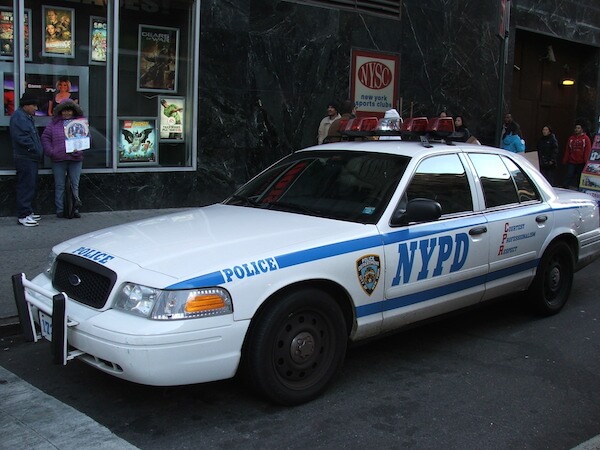The paramedic couldn’t remember what had happened. That’s what she said, anyway. I was asking her to describe the position of a handcuffed man she had been called to treat over a year before. I had worked like hell to prepare for this moment. If she gave me one answer, there was a decent chance that a police officer could end up charged with a crime. If she gave me another, he would be justifiably cleared. But she couldn’t give me any answer at all. And she probably didn’t remember. It had been over a year since she was called to that stairwell. And truth be told, she wasn’t even a paramedic anymore. After she’d failed her third drug test, they had fired her.
For eight years, I investigated police misconduct for the City of New York. It was the most interesting job I’m ever likely to have. I took complaints from people who claimed to have been cursed at, racially profiled, or beaten. I ordered police documents. I subpoenaed medical records. And I canvassed for witnesses and interviewed police officers. I was learning more about New York—its neighborhoods, its people, its rhythms, and its habits—than I could have by doing just about anything else. But most importantly, I was playing an important role in bringing some justice for those who had been hurt by police abusing their authority.
In fact, justice was often slow in coming, and sometimes didn’t come at all. That was another lesson of the job. If you want to bring charges against an officer, you have to have all your evidence in order: when I did this work, there were no crowds with cell phones recording police abuse. You had to find the address of everyone who had seen the incident. You had to interview them. And too often those statements all contradicted one another and showed you a murky picture of a murky world. Trying bringing that before an administrative judge.
I interviewed that paramedic about the stairway to see if police had killed a man by setting him down the wrong way. It was a pepper-spray case, and all the pepper-spray cases were coming to me. I had just finished researching everything that I could find about pepper spray for a report our agency was doing. I read the Aberdeen training ground study. I read reports from the State of California, from OSHA, from the manufacturer. Pepper spray is “less than lethal” force—it hurts like hell, but it isn’t supposed to kill you. But it turns out that if you are overweight, have been handcuffed, have been pepper-sprayed, and have been placed face down, you can suffocate on your own weight. It’s called “positional asphyxia.” And if you’ve been pepper-sprayed, the wheezing and gasping of death sounds just like the wheezing and gasping you’d been doing anyway.
The risk of positional asphyxia was well known. That’s why the NYPD had a regulation requiring that all civilians who are pepper-sprayed and handcuffed be placed in a sitting position or on their backs—never face down, no matter their size. The case I was investigating involved a man who had been pepper-sprayed and double-cuffed and who had died. He also had hit his girlfriend in the face with a claw hammer and had a significant amount of cocaine in his bloodstream. The medical examiner had told me in no uncertain terms that he thought the death was due to cocaine intoxication. I told him I still had a job to do. If the cops had placed him face down, they would have been liable for breaking the regulation on treating people who have been pepper-sprayed, regardless of whether they had actually killed him. If they had placed him on his back, they would have been home free. But when the drug-addled paramedic couldn’t remember one way or another, I was back to where I started. The case was closed as “unsubstantiated”—we didn’t know what happened, one way or the other. I still don’t.
I thought about that case a lot after Eric Garner died two years ago. Garner wasn’t pepper-sprayed, and the question of what constitutes a “chokehold” is more complicated than most coverage has suggested. But when I watched the part of the video where he was on the ground, face down and handcuffed, receiving no medical assistance at all, I got sick to my stomach.
I spent eight years investigating police misconduct during a time when no one much seemed to care. I spoke at the community council meeting after Timothy Stansbury was shot, and I spoke at meetings and prayer breakfasts across the city when Sean Bell was killed. But I didn’t just investigate deaths—I worked on cases involving illegal stops, beatings with flashlights or nightsticks, racially offensive language, and, of course, pepper spray. In the past two years, while police misconduct has become a national issue, I have thought more and more about my work, about what we have learned, and about how we can improve.
That pepper-spray case on a stairwell made it into the backstory of one officer in my new book, The Big Fear. I hope the book is fun to read—it’s an adventure, after all, a thriller with a deep mystery and a dark conspiracy powering the story. But it is also a meditation on the work I did, the time I spent in the far corners of a forgotten city, trying to get one story straight or another, and having to settle for the fact that some answers must be kept from us forever.
Andrew Case’s new novel, The Big Fear, is being published by Thomas & Mercer on April 1, 2016.
Link to Andrew Case’s website: http://www.andrewcase.com/

